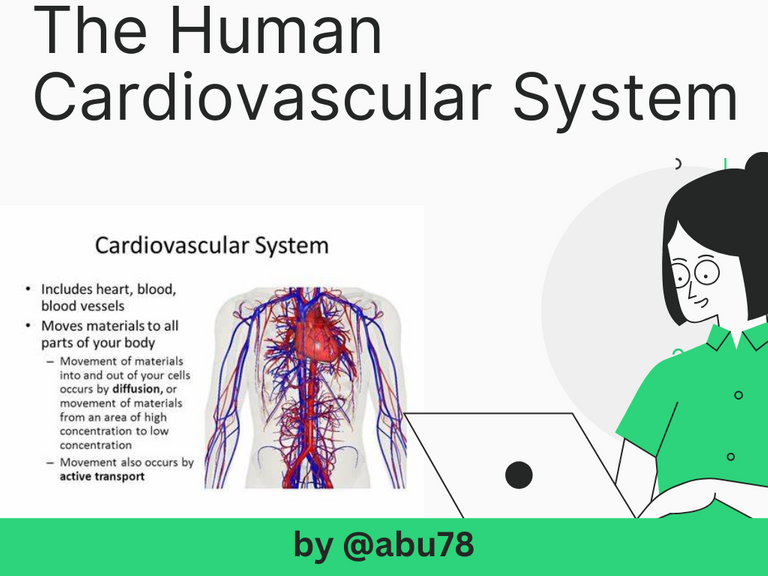The Human Cardiovascular System and its functions
Greetings to all and sundry on this platform once again. As a biochemistry student, today I researched "The Human Cardiovascular System" and decided to share it with you guys here. I hope that you will enjoy it and also learn from it. Stay tuned with me as I discuss this topic in my article.

The cardiovascular system is a system that comprises the heart, blood, and blood vessels such as arteries, and veins. It is a transport system meaning its main function is the transport of substances in the body. The cardiovascular system is responsible for the removal of waste substances and also for the transport or supply of nutrients. The substances are transferred or transported in a liquid medium and it passes through a closed tubular system.
General Function of the Cardiovascular System
This system helps in the transport of hormones, and nutrients. It is also involved in the exchange of gases. As mentioned earlier, it is involved in the removal of waste products from the body. It also serves as the passage through which blood is transported. The cardiovascular system is again responsible for regulating immunity.
Let's now look at the components of the Cardiovascular System. They are blood, heart, and blood vessels. We would briefly explain them here in this article.
The Blood: This is comprised of red blood cells and plasma. Red Blood Cells are made of three cells and they are the erythrocytes, leucocytes, and thrombocytes. Next, is plasma which is the fluid-like portion of the blood.
The Heart: This is a four-chambered organ that has the size of a fist and with hollow muscular. It can be found on the left of the midline and at the upper surface of the diaphragm, posterior to the sternum and anterior to the vertebral column.
Functions of the Heart

The heart is responsible for regulating the one-way flow of blood. It also helps in generating human blood pressure. The regulation of blood supply is also done by the heart. The heart is also responsible for the separation of systemic circulations and pulmonary.
The Blood Vessels: This is referred to the closed networked tubes that allow the passage or transfer of substances. They include the following; capillaries, veins, and arteries.
The capillaries are referred to as the microscopic vessels which are made of cell thick. It is responsible for the functioning of the respiratory system (i.e. the exchange of gasses and nutrients). Capillaries are the smallest blood vessels and they are responsible for connecting veins and arteries.
The veins also termed the draining channel. It is where blood transfusion is done into the human body. They are responsible for the transport of blood back to the heart. It only permits the transport of blood through one path. Veins transport deoxygenated blood back to the heart.
Finally, the arteries are blood vessels that are responsible for carrying blood away from the heart. They carry oxygenated blood away from the heart and their vessels are thick vessels. There are some classifications of arteries and including muscular, arterioles, and elastic.
Reference 1
Reference 2
Reference 3
Reference 4

Thanks for your contribution to the STEMsocial community. Feel free to join us on discord to get to know the rest of us!
Please consider delegating to the @stemsocial account (85% of the curation rewards are returned).
You may also include @stemsocial as a beneficiary of the rewards of this post to get a stronger support.